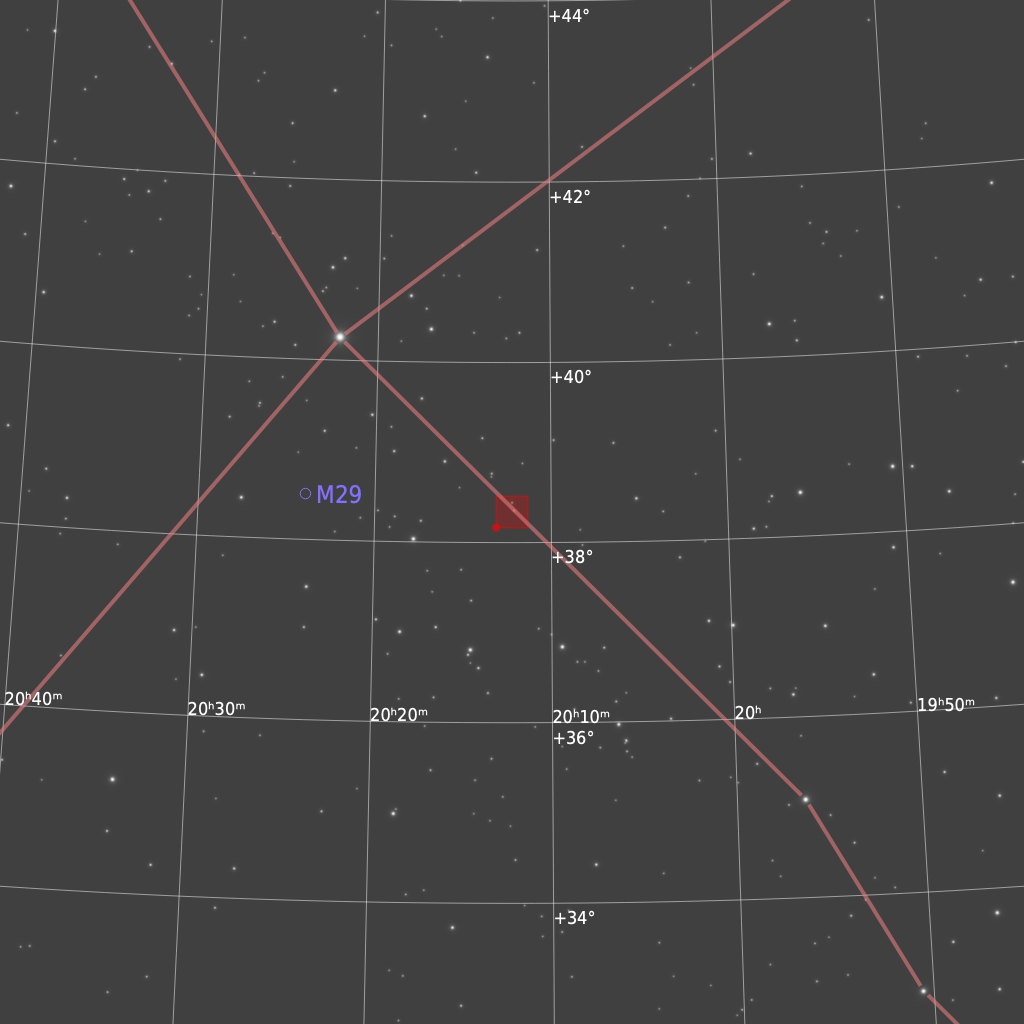The Crescent Nebula
NGC 6888
About 4,700 light years away, NGC 6888 is formed by a fast-stellar wind from the Wolf-Rayet star HD 192163, also known as WR 136.
The star is shedding its outer envelope, ejecting the equivalent of the Sun’s mass every 10,000 years. This stellar wind is colliding with, and energizing, a slower-moving wind ejected by the star when it became a red giant around 400,000 years ago.
The result of the collision is a shell about 25 light years across. Two shock waves, one moving outward and one moving inward, heats the stellar wind to X-ray-emitting temperatures. The central star WR 136 will probably undergo a supernova explosion sometime in the next million years.
Située à environ 4 700 années-lumière, NGC 6888 a été sculptée par un fort vent stellaire provenant de l’étoile Wolf-Rayet HD 192163, également connue sous le nom de WR 136.
L’étoile se défait de son enveloppe externe, éjectant l’équivalent d’une masse solaire tous les 10 000 ans. Ce vent stellaire entre en collision avec un vent plus lent, éjecté par l’étoile lorsqu’elle est devenue une géante rouge, il y a environ 400 000 ans.
Le résultat de cette collision est une coquille d’environ 25 années-lumière de diamètre. Deux ondes de choc, l’une se déplaçant vers l’extérieur et l’autre vers l’intérieur, chauffent le vent stellaire jusqu’à des températures émettant des rayons X. L’étoile centrale WR 136 deviendra probablement une supernova au cours du prochain million d’années.
TECHNICAL DATA
ACQUISITION DETAILS
OPTICS Officina Stellare ProRC 700
CAMERA FLI PL 16803
MOUNT Officina Stellare equatorial fork mount
FILTERS Ha, OIII
LOCATION IC Astronomy Observatory, Spain
DATE August 2020
EXPOSURES 3.3 hours (Ha 20 x 300 sec, OIII 20 x 300 sec)
PROCESSING SOFTWARE Pixinsight, CCDstack, Photoshop
COPYRIGHTS Telescope.Live & Nicolas Rolland

TARGET DETAILS
RA 20h 12m 13.3s
DEC +38° 20’ 22.9"
SIZE 21.1 x 21.2 arcmin
ORIENTATION Up is 0.121 degrees E of N
CONSTELLATION Cygnus
DISTANCE 5,000 ly
MAGNITUDE 7.4
